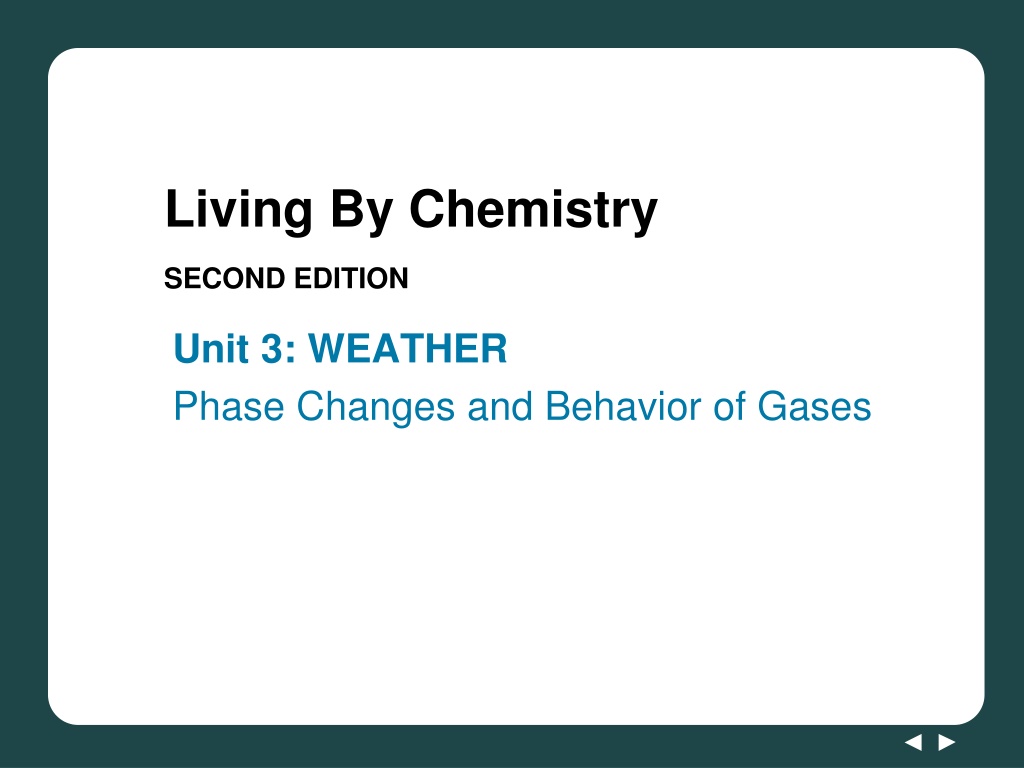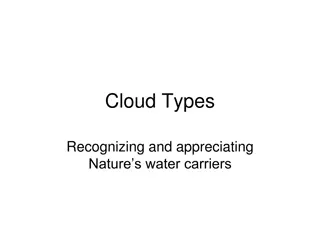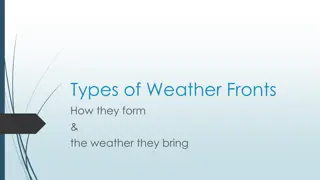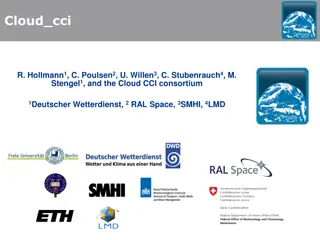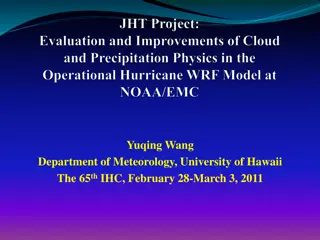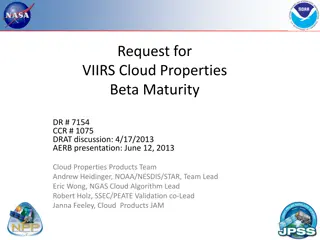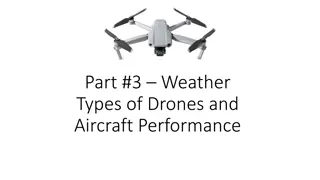Understanding Weather and Cloud Formation
Explore the influence of high and low-pressure systems on weather, learn about cloud formation, and understand the relationship between pressure, temperature, and volume changes. Engage in hands-on experiments like creating a cloud in a bottle and discussing key concepts like Gay-Lussac's law and the behavior of gases.
Download Presentation

Please find below an Image/Link to download the presentation.
The content on the website is provided AS IS for your information and personal use only. It may not be sold, licensed, or shared on other websites without obtaining consent from the author. Download presentation by click this link. If you encounter any issues during the download, it is possible that the publisher has removed the file from their server.
E N D
Presentation Transcript
Living By Chemistry SECOND EDITION Unit 3: WEATHER Phase Changes and Behavior of Gases
Lesson 62: Cloud in a Bottle High and Low Pressure
ChemCatalyst Clouds are tiny water droplets suspended in the air. 1. Are pressure, temperature, or volume changes involved in the formation of clouds? Explain your thinking. 2. Cloud formation is related to low pressure. Explain why.
Key Question How are areas of high and low air pressure related to the weather?
You will be able to: explain the influence of high- and low-pressure systems on the weather
Prepare for the Lab Work in groups of four. Safety goggles should be worn at all times.
Discussion Notes In the plastic bottle, pressure and temperature were changing, but the volume stayed (nearly) the same. Gay-Lussac s law also tells us that when the pressure inside the bottle is increased, the temperature also must increase.
Discussion Notes (cont.) Clouds form when water vapor in the atmosphere changes phase and forms water droplets. Warm air rises because it is less dense than cold air. Enough water vapor must be present in the air in order for clouds to form.
Wrap Up How are areas of high and low air pressure related to the weather? Clouds form when both air pressure and temperature are low. Areas of low air pressure are associated with fronts, storms, clouds, and precipitation, whereas areas of high air pressure are associated with clear skies and pleasant conditions.
Check-In On a camping trip you take a sealed plastic water bottle to a higher elevation. When you arrive on the mountain you notice the bottle is slightly larger and condensation has formed on the inside of the bottle. Explain what happened in terms of P, V, T, and the quantity PV.
